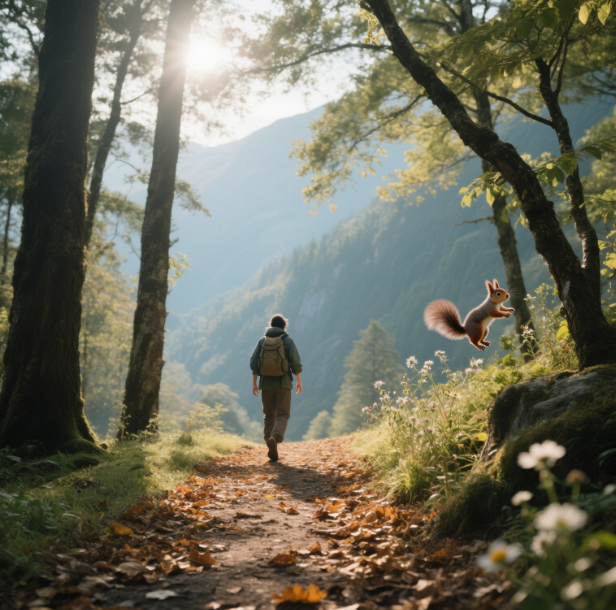In a world where travel often devolves into a frenzied checklist of attractions and rushed itineraries, slow travel emerges as a transformative alternative. It’s not about the speed at which you move from one place to another; it’s about the depth of connection you forge with the natural world around you. Slow travel is a deliberate choice to immerse oneself fully in the landscapes, ecosystems, and rhythms of nature, turning every journey into a profound and soul – enriching experience.
At the heart of slow travel lies the art of patience. Instead of dashing from one famous landmark to the next, slow travelers allow themselves the luxury of time. They linger in a meadow, watching as butterflies flit from flower to flower, their wings catching the sunlight in a dance of color. In a forest, they pause to listen to the symphony of birdsong, the rustling of leaves underfoot, and the distant murmur of a hidden brook. This patience opens the door to experiences that often go unnoticed in the haste of conventional travel.
One of the most effective ways to connect with nature during slow travel is through hiking. A well – chosen trail becomes a portal into the heart of the wilderness. As you put one foot in front of the other, you feel the texture of the earth beneath your boots, whether it’s the soft give of moss – covered soil or the rough, rocky terrain of a mountain path. With each step, you’re surrounded by the scents of pine, damp earth, and wildflowers. Hiking at a slow pace allows you to observe the smallest details: the intricate patterns on a fern frond, the industrious movements of a colony of ants, or the sudden flight of a startled deer.
Another key aspect of slow travel is choosing accommodation that’s in harmony with nature. Instead of staying in impersonal city hotels, opt for a cozy cabin in the woods, a rustic lodge by a lake, or a tent pitched in a secluded campsite. Waking up to the sounds of nature, with the first rays of sunlight filtering through the trees or reflecting off the water, creates an immediate and intimate connection. You can spend your mornings sipping coffee on the porch, watching as the mist lifts from the valley, or your evenings stargazing from the comfort of your campsite, the vast expanse of the night sky stretching out above you.
Slow travel also encourages a deeper understanding of local ecosystems. Engage with local guides, naturalists, or residents who can share their knowledge of the flora, fauna, and geology of the area. Learn about the delicate balance of the ecosystem, the role each species plays, and the impact of human activity on the environment. For example, in a coastal region, you might discover how the mangroves protect the shoreline from erosion and serve as a nursery for countless marine species. This newfound knowledge not only enriches your travel experience but also instills a greater sense of responsibility towards preserving the natural world.
Food is an integral part of slow travel and a wonderful way to connect with nature. Seek out local, seasonal produce, whether it’s freshly picked berries from a farm, fish caught that morning from the ocean, or vegetables grown in a nearby garden. Prepare meals outdoors, using simple cooking methods that allow the natural flavors of the ingredients to shine. A picnic by a river, with a spread of local cheeses, bread, and fruits, becomes more than just a meal; it’s a celebration of the land and its bounty.
In essence, slow travel is a call to slow down, to be present, and to truly see and appreciate the beauty of nature. It’s about building a relationship with the places you visit, rather than just passing through them. By embracing the principles of slow travel, you’ll find that your journeys become not just trips, but odysseys of discovery, filled with moments of wonder, connection, and a newfound reverence for the natural world.



